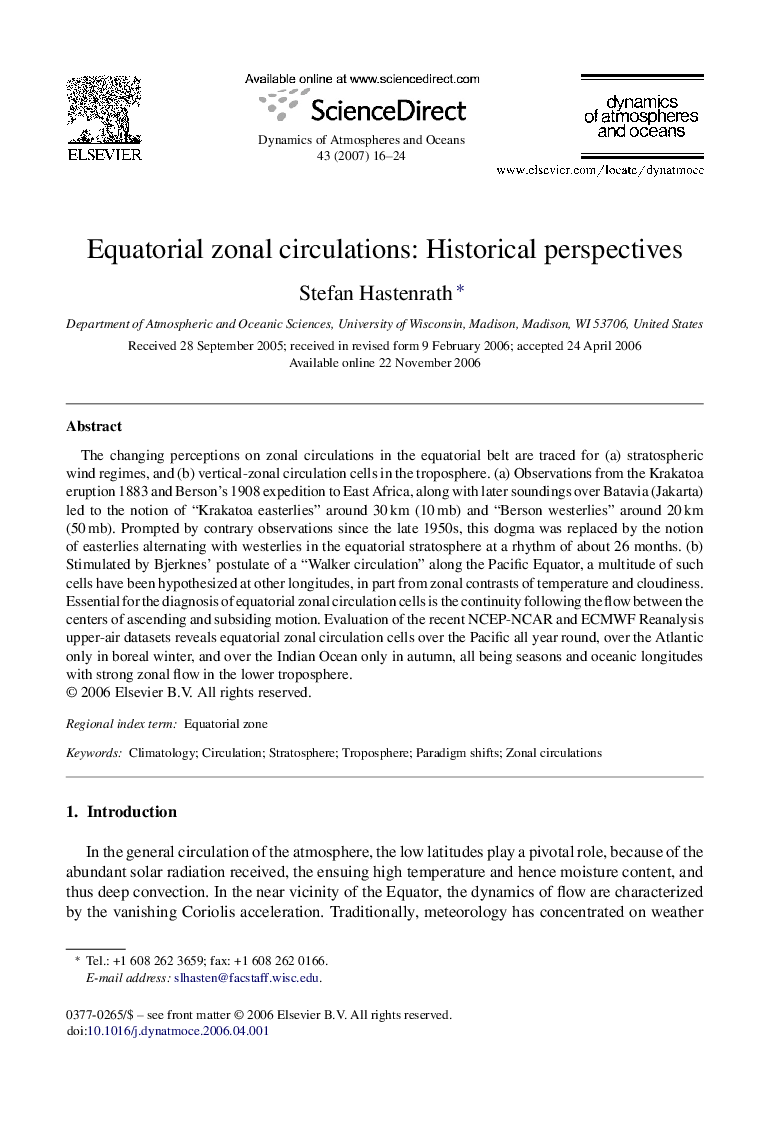| Article ID | Journal | Published Year | Pages | File Type |
|---|---|---|---|---|
| 4674274 | Dynamics of Atmospheres and Oceans | 2007 | 9 Pages |
Abstract
The changing perceptions on zonal circulations in the equatorial belt are traced for (a) stratospheric wind regimes, and (b) vertical-zonal circulation cells in the troposphere. (a) Observations from the Krakatoa eruption 1883 and Berson's 1908 expedition to East Africa, along with later soundings over Batavia (Jakarta) led to the notion of “Krakatoa easterlies” around 30Â km (10Â mb) and “Berson westerlies” around 20Â km (50Â mb). Prompted by contrary observations since the late 1950s, this dogma was replaced by the notion of easterlies alternating with westerlies in the equatorial stratosphere at a rhythm of about 26 months. (b) Stimulated by Bjerknes' postulate of a “Walker circulation” along the Pacific Equator, a multitude of such cells have been hypothesized at other longitudes, in part from zonal contrasts of temperature and cloudiness. Essential for the diagnosis of equatorial zonal circulation cells is the continuity following the flow between the centers of ascending and subsiding motion. Evaluation of the recent NCEP-NCAR and ECMWF Reanalysis upper-air datasets reveals equatorial zonal circulation cells over the Pacific all year round, over the Atlantic only in boreal winter, and over the Indian Ocean only in autumn, all being seasons and oceanic longitudes with strong zonal flow in the lower troposphere.
Related Topics
Physical Sciences and Engineering
Earth and Planetary Sciences
Atmospheric Science
Authors
Stefan Hastenrath,
